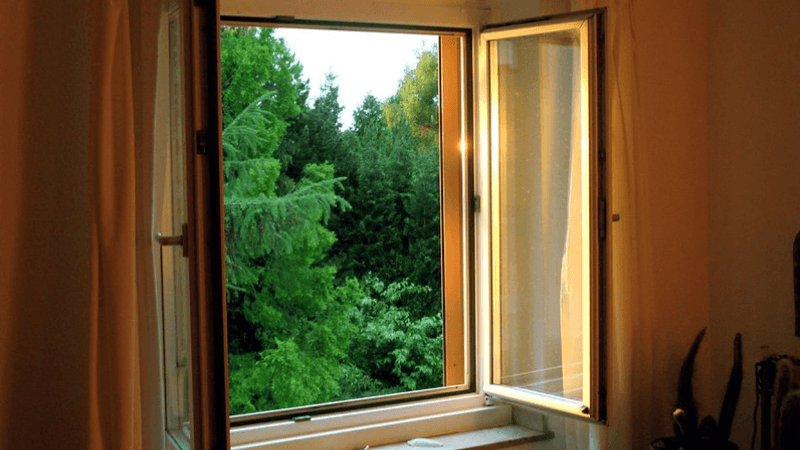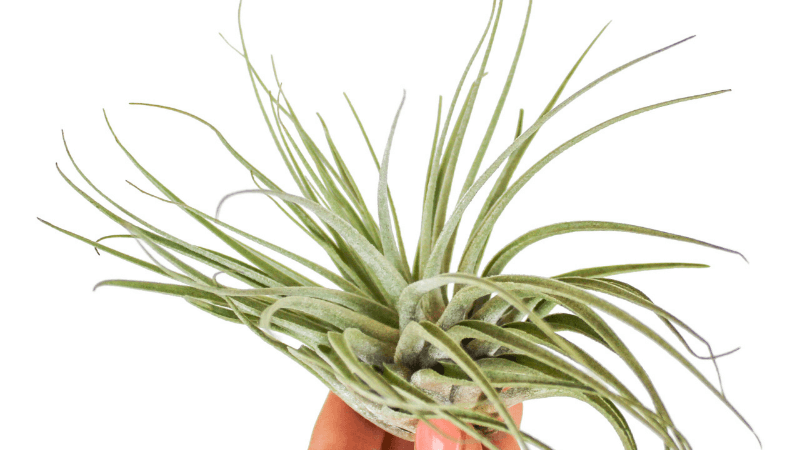When your home has high humidity or moisture, both your home’s structure and your health are at risk. Dust mites, bugs, mold, and mildew are all unwanted guests that thrive in high humidity. Dehumidifiers are optimized machines that help remove excess moisture in the air. However, If you do not own a dehumidifier, there are several steps you can take to lower the moisture in your home.
1. Run an Air Conditioner
Air conditioning not only works to cool down a room during the hot summer months, but it can also help reduce indoor humidity that accompanies these hot times. Conditioning the air does will not necessarily remove moisture, but it is a side effect of the cooling process.
Here is how it works.
Air conditioners work by utilizing a chemical called a refrigerant to cool down space. The refrigerant, usually a fluid, captures heat as it flows through evaporator coils. As it absorbs heat, it changes to gas and flows to the compressor and condenser located outside. The compressor compresses the refrigerant, thus releasing heat before flowing back to keep the cycle going.
On the evaporator coils is where the magic happens. Because the coils are cold, as humid air passes through it condenses on them. As more air passes through, the condensing water builds up and drips down to the condensation drain or drip pan, where it is then allowed to drain out through a floor, wall, or other types of discharge.
Because water is removed from the air, dry cool air is released back into your home. Modern air conditioners will also allow you to set your ideal humidity level, while some come with a dehumidifying setting.
2. Improve the Air Flow
Air circulation in your home is very crucial. It helps regulate the temperature, remove impurities, and reduce the humidity level.
Opening doors and windows are the simplest and most obvious way of immediately improving indoor air circulation. When the door and windows are open, air moves in and creates a cross draft that carries excess moisture from your home. Having open spaces near sources of high humidity like bathrooms and kitchens is also a great way to let moisture out and prevent buildup.

In addition to opening windows and doors, you can boost air circulation by running fans. Fans will ensure air is kept moving, thus limiting moisture buildup. Window and ceiling fans would be useful for this purpose.
Still on fans, installing exhaust fans in high humidity areas also prevents the build and movement of moisture around your home. Exhaust fans, unlike regular fans, work in reverse. Rather than blow air, they suck it outward. This improves ventilation, removes pollutants from the air, and prevents humidity from taking over. Bathrooms, kitchen, and laundry areas will benefit from exhaust fans.
Installing vents around your home or using whole-house fans can also prevent moisture buildup by letting it escape to the outside. Proper maintenance of air vents should be followed to ensure they work optimally.
3. Use Moisture Absorbing Materials
Hydroscopic, desiccant, or absorbent materials can work to absorb excess water in the air. There are various products you can purchase online or in departmental or hardware stores to help absorb excess moisture. Products like Damprid, Silica gel, rock salt, baking soda, and Charcoal briquettes can all be used to dehumidify your home.
Damprid is a cost-effective long term way of keeping your humidity in check. Damprid is sold in a crystal package that can be hung or placed around your home. Once placed in a high humidity area, the crystal first absorbs moisture in the air and hardens. Damprid comes int three forms, hanging packets, bucket, and spreadable powder.
Silica gel packets are found in all sorts of products that would be affected by excess moisture or condensation. Silica gel or Silicon dioxide (SiO2) is a very porous material and works by adsorbing moisture in the air. Once they absorb moisture, instead of disposing of it, the silica gel can be reactivated by reheating in a microwave. Check out Interteck Bulk Desiccant Beads, which are reusable. When reheating, do it outside to prevent moisture from going back to the air.
Calcium chloride is a hygroscopic substance and will absorb moisture in the air. Because of its desiccant properties, it is one of the most popular chemicals in DIY homemade dehumidifiers and some popular desiccants like damprid. To use calcium chloride for dehumidification, add it to a bowl and watch it do its magic. Calcium chloride can absorb water several times its weight before dissolving into liquid brine.
Apart from the products above, others can be used for absorbing moisture in the air. Rock salt, baking soda, charcoal briquettes, and coffee whitener can all be used to reduce moisture in the air.
4. Get Dehumidifying Plants
Plants are known to release moisture into the air by the transpiration process. However, can plants also absorb moisture in the air and help combat humidity problems? If you’re skeptical about this method, so am I, but after reading several resources, it looks like a viable option to dehumidify you can try.
Some plants can reduce humidity by a process called foliar uptake. Plants or even living animals evolve adaptations depending on the environment and other factors. Plants growing in dry areas with little rainfall have developed adaptations to absorb moisture through the leaves. Selecting the right type of plant can help by absorbing moisture in a room.

According to gardening know-how, tillandsia, peace lily, English ivy, parlor palm, and Boston fern are all good dehumidifying plants you can use in your home. Tillandsia, called an air plant, is a good example of a dehumidifying plant. It does not grow on soil and gets its water content from the air.
[snippet]What is a Healthy Humidity Level?
The recommended indoor relative humidity is between 30 percent and 50 percent. Below 30 percent, the air is considered to be dry, while above 50 percent is too high.
[/snippet]The relative humidity is a way of describing the amount of water vapor in the air. Absolute humidity is the measure of water vapor in the air regardless of the temperature. Warmer air tends to hold more water vapor compared to cold air. This is why we do not recommend heating as a form of reducing humidity in your home. Heating increases the amount of moisture air can hold, but the moisture content is still the same. To measure humidity in your home, read our informative guide on how to measure humidity in your home.
Happy Removing Excess Moisture in Your Home
A home with a high humidity level can bring about health-related issues especially for people with respiratory problems or weak immune systems. Reducing the humidity removes dampness, improves the air quality, and eliminates the perfect condition for the growth of bacteria, fungi, viruses, and mold that cause health concerns.
Apart from reducing the humidity, eliminating the source of moisture should among your top priorities. Reducing steam when cooking, keeping firewood outside, treating water damage, venting your dryer outside, and taking cooler showers can all help reduce moisture in your home.
Whether you use a dehumidifier or natural means to keep your home dry, there are benefits of keeping your home’s humidity level right. Keeping your home safe, healthy, and comfortable is what we aim for here at cozy indoor.


